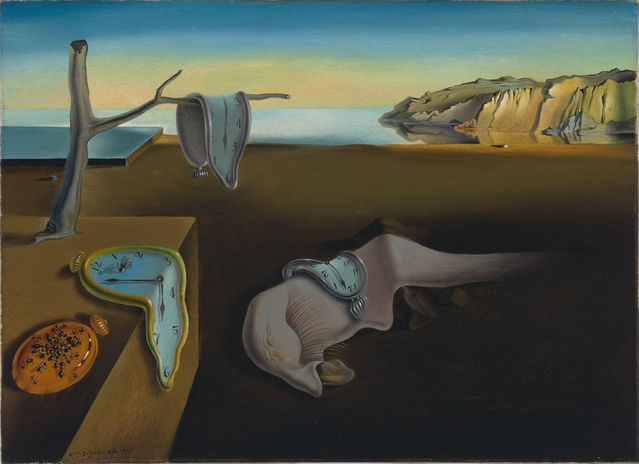Diet
Time Present and Time Past: Obesity and Chronobiology
Setting limits and confronting our chronically fed state in a 24/7 environment.
Posted October 19, 2017

Does it matter whether we eat three large meals, six smaller meals, or whether we eat irregularly throughout the day? Or if we eat most of our food in the earlier part of the day or the most at night?
Researchers have been asking these questions as they note the importance, in “every piece of human physiology,” including food intake, of our biological clocks.
“It is hard to find things that are not rhythmically fluctuating,” says Rockefeller University's Dr. Michael Young, one of three scientists to win this year’s Nobel Prize in Physiology and Medicine for work on identifying genes involved in the “inner workings” of our circadian rhythms. (Burki, The Lancet, 2017) Young adds, “If you have feeding cycles that are occurring with a daily rhythmic pattern, then you want organs that are dealing with the incoming food to be best aligned with those changes in the food supply. That is exactly what you see: genes switching on and off according to what the organism expects will be the pattern of food coming into the system.” (Burki, 2017)
The suprachiasmatic nucleus (SCN) in the anterior hypothalamus is the "master regulator" of our circadian rhythms, and it is synchronized (i.e., "entrained") by the light/dark 24-hour cycle of the sun's rotation. There are also so-called "peripheral" clocks in almost every cell in our body, and these cellular clocks can be entrained on a daily basis by zeitgebers, ("time givers") i.e., other environmental cues such as food intake, noise, or exercise. (Bray and Young, Current Obesity Reports, 2012)
The timing of eating, though, is thought to be one of the most powerful zeitgebers. (Bray and Young, Obesity Reviews, 2007) It is as if our tissues can sense time. (Kohsaka and Bass, Cell Metabolism, 2007.) When our peripheral clocks become desynchronized from the central clock, we have chronodisruption (Garaulet and Gómez -Abellán, Physiology & Behavior, 2014) and the development of metabolic disorders. (Engin, Advances in Experimental Medicine and Biology, 2017)
Some researchers, though, believe the distinction between light and food as "entrainable circadian oscillators" is "convenient" but "ultimately a false dichotomy." (Mistlberger, Physiology & Behavior, 2011) For a complete discussion of circadian rhythms, see Karasu and Karasu, The Gravity of Weight, 2010, pp. 297-334.

Many even believe that obesity is a chronobiological disease. (Beccuti et al, Pharmacological Research, 2017) Given the importance of the timing of eating for our biological clocks, do we need what may be called "increased dietary structure" (Kulovitz et al, Nutrition, 2014) when we consider the timing and frequency of our meals? Some researchers believe so. For example, Allison and his colleagues (Mattson et al, Proceedings of the National Academy of Sciences, USA, 2014) explain that our industrial modern lifestyle has "perturbed" our circadian rhythms in three ways: shift work (reversal of the day/night pattern); prolonged exposure to artificial light of our increasingly 24/7 day; and erratic eating patterns where in many parts of the world, food is continuously available. From an evolutionary perspective, eating three meals and additional snacks is abnormal and leads to "daily overconsumption." (Mattson et al, 2014.)
In other words, we all tend to be in a "chronically fed state." (Cronise et al, Metabolic Syndrome and Related Disorders, 2017.) And we may need to consider "appropriate circadian timing" because of increased prevalence of obesity and diabetes and challenges to our circadian hygiene inherent in our 24/7 lifestyle. (Jiang and Turek, American Journal of Physiology, Endocrinology, and Metabolism, 2017)
Studying meal pattern, though, is difficult, including whether to conduct controlled research trials or to use "free-living" adults within a community setting. One of the major limitations is the "predominance of observational cross-sectional studies," rather than randomized controlled trials, that are often short-term. (Kulovitz et al, 2014) Further, many trials fail to hold calories constant, and calories may be even more important than meal frequency in affecting metabolism and body composition. (Alencar et al, Nutrition Research, 2015.) There is also a lack of standardized terminology, such as what constitutes a meal (e.g. defining what constitutes "breakfast") or a snack or ad libitum. Typically, most studies rely on notoriously inaccurate self-report data, and many do not address the issue of exercise or that those who eat smaller meals may be engaging in other health-protective behaviors. And there is always the question of compliance and adherence to the research protocol. (Kulovitz et al, 2014) Many other studies have small sample sizes "that consequently lack statistical power." (Schoenfeld et al, Nutrition Reviews, 2015)

Despite the difficulties, researchers have studied different patterns of food intake. There is caloric restriction (20 to 40 percent), with meal frequency kept constant; intermittent energy restriction, involving either fasting or reducing intake (e.g. 500 or 600 calories per day) on two non-consecutive days and eating "regularly" on the other 5 days (5:2 plan); and time-restricted eating, involving eating food within a 4-to-6 hour window per day. (Mattson et al, 2014.) Intermittent energy restriction, for example, works by the principle of hormesis, namely that exposure to a mild stress (e.g. restricted eating) results in adaptive behaviors that protect from more major stresses. There is a suggestion that this pattern, (athough there is considerable variation among studies), can lead to increased insulin sensitivity and other favorable metabolic parameters and even inhibit certain cancers. (Mattson et al, 2014) A recent small study has demonstrated that a 5:2 diet can be successful for some but not necessarily superior to other approaches. (Conley et al, Nutrition & Dietetics, 2017) When reached for comment about 5:2 energy restriction and its relationship to circadian rhythms, though, both Dr. Michael Young and Dr. Molly Bray each believe that this pattern does not make much sense. Dr. Bray added, "Such a regimen might be more tolerable, and thus, adherence might be better."

What about eating more calories later in the day? Allison and colleagues (Casazza et al, Critical Reviews in Food Science and Nutrition, 2015) note that the common saying, "Eat breakfast like a king, lunch like a prince, and dinner like a pauper" may be questionable because few studies have looked at calorie counts specifically. They find there is "little direct evidence to support or refute a unique obesogenic effect of calories consumed in the evening" but they cannot rule out a chronobiological effect on weight. They do acknowledge that those who work late shifts tend to be obese and are more prone to metabolic disturbances, but there may be other factors involved such as doing less exercise, eating unhealthy foods, or sleeping fewer hours. We do know from considerable research in rodents, for example, that when fed during their inactive time or fed throughout day and night, rodents tend to get obese and develop metabolic abnormalities. (Garaulet and Gómez-Abelán, 2014) There are few randomized controlled trials for intermittent energy restriction or time-restricted eating in humans. "Prescriptions" for meal frequency or timing remain to be "developed, validated, and implemented" (Mattson et al, 2014), and short-term benefits may depend more on the type of diet, calorie restriction, body composition, and genetics.

"Still LIfe with a Skull." Philippe de Champaigne (1602-1674). Tessé Museum.(Le Mans, France.)
Bottom line: "There is no shortage of information available to the public" on different patterns of intermittent fasting, but there is "a shortage of evidence-based support." (Patterson and Sears, Annual Review of Nutrition, 2017) When a dieting strategy may help and fits with your schedule and your willingness to comply, "from a purely practical perspective," it may be worth trying. (Kersick et al, Journal of the International Society of Sports Nutrition, 2017) Whether changing meal frequency leads to increased satiety, appetite suppression, or metabolic benefit is not yet known conclusively. Circadian rhythms affect all aspects of our physiology. It seems reasonable, therefore, that meal patterns (e.g. timing and frequency) may be relevant for maintaining health. But for patterns of fasting and food restriction to be "more than a weight-loss fad," there needs to be "greater scientific rigor than our current studies provide." (Horne et al, American Journal of Clinical Nutrition, 2015) Note: My title is from T.S. Eliot's "Burnt Norton," from The Four Quartets.




